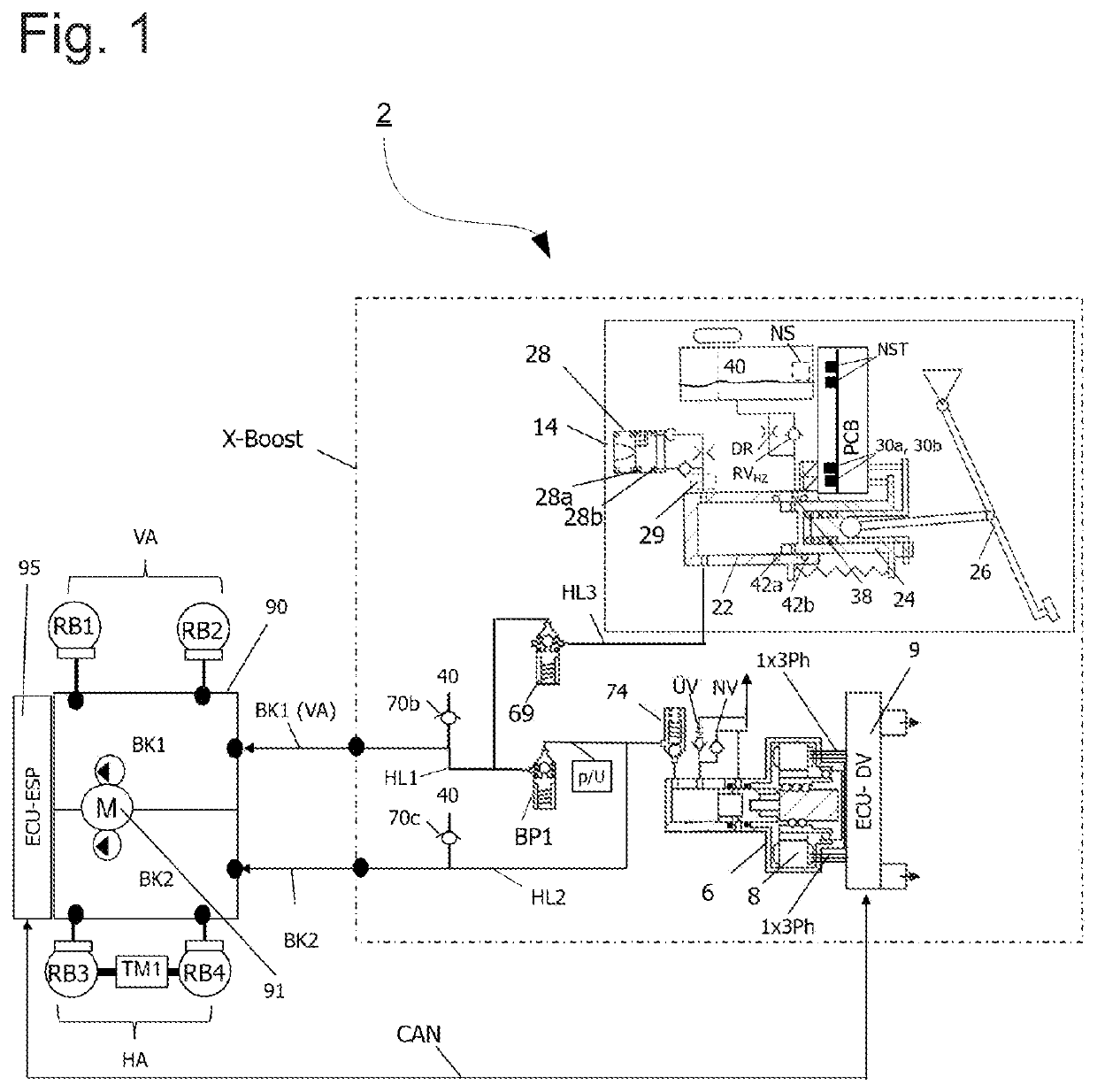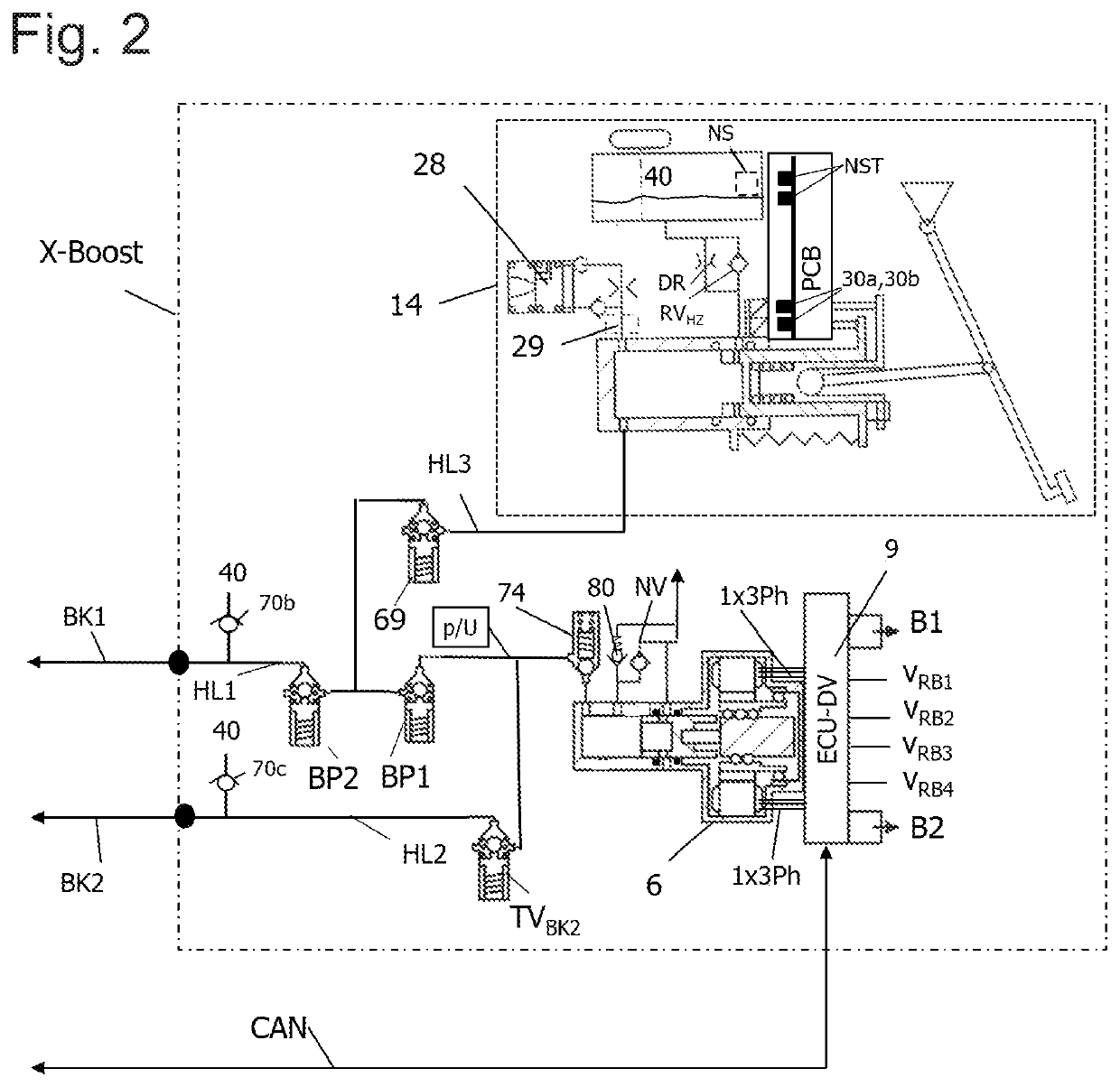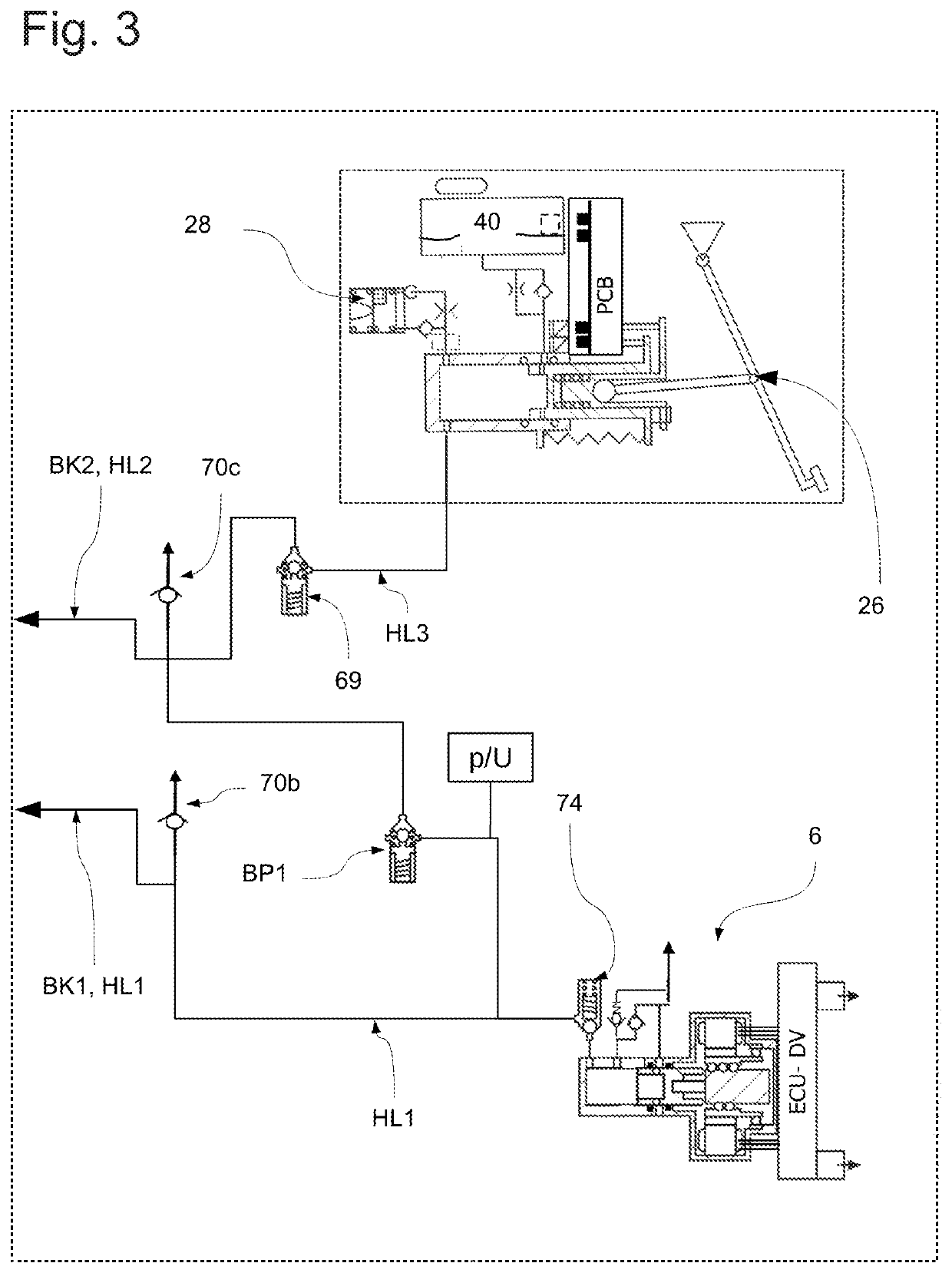Brake system and method for controlling a brake system
a brake system and brake technology, applied in the direction of braking systems, braking components, transportation and packaging, etc., can solve the problems of unfavorable braking distance, complex arrangement of four or five pistons and six solenoid valves, and high construction length
- Summary
- Abstract
- Description
- Claims
- Application Information
AI Technical Summary
Benefits of technology
Problems solved by technology
Method used
Image
Examples
Embodiment Construction
[0107]FIG. 1 shows a schematic circuit diagram of a brake system 2 comprising a first module (referred to as X-Boost) and a second module. The first module—the X-Boost—has a first pressure supply unit 6 with an electromotive drive 8 as well as a second pressure supply unit 14 with a main brake cylinder 22 and an actuating element 26 with a brake pedal. Furthermore, a valve device with various solenoid and check valves is provided.
[0108]The second module comprises an electrically driven motor-pump unit 90 (also referred to as an ESP unit) having a pump with an electromotive drive 91—also referred to as a third pressure supply unit. The motor-pump unit 90 may be any ESP unit. A suitable ESP unit is described in detail in DE 10 2014 205 645 A1. Alternatively, a standard ABS unit without ESP function can be used as the second module.
[0109]The two modules (X-boost and ESP unit) are set up to supply pressure medium to two brake circuits BK1 and BK2, wherein the modules are preferably conn...
PUM
 Login to View More
Login to View More Abstract
Description
Claims
Application Information
 Login to View More
Login to View More - R&D
- Intellectual Property
- Life Sciences
- Materials
- Tech Scout
- Unparalleled Data Quality
- Higher Quality Content
- 60% Fewer Hallucinations
Browse by: Latest US Patents, China's latest patents, Technical Efficacy Thesaurus, Application Domain, Technology Topic, Popular Technical Reports.
© 2025 PatSnap. All rights reserved.Legal|Privacy policy|Modern Slavery Act Transparency Statement|Sitemap|About US| Contact US: help@patsnap.com



